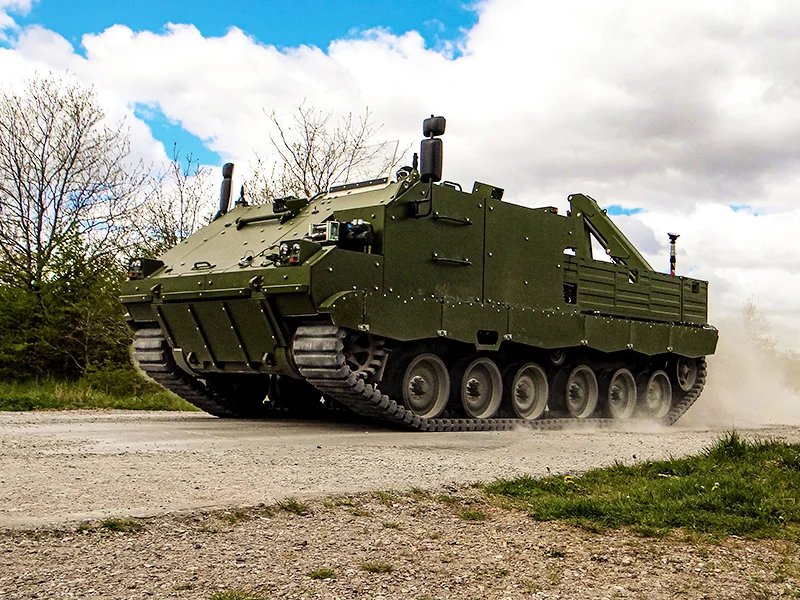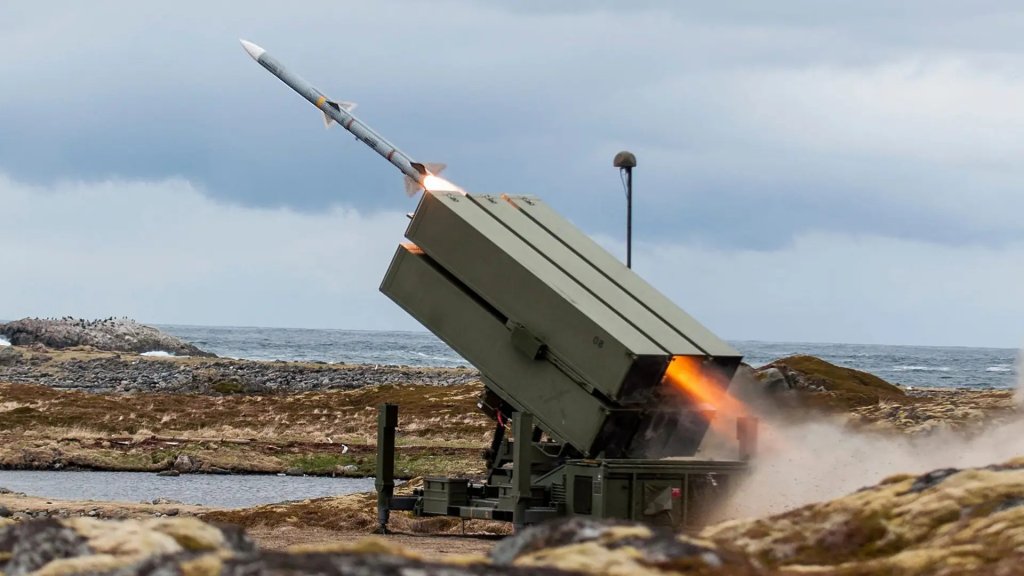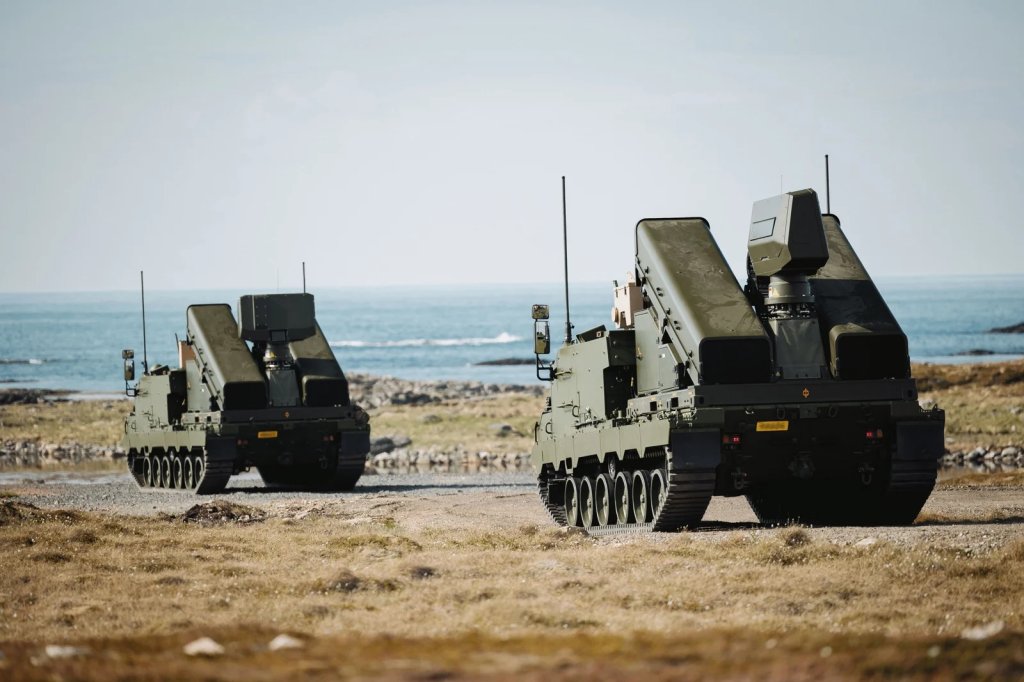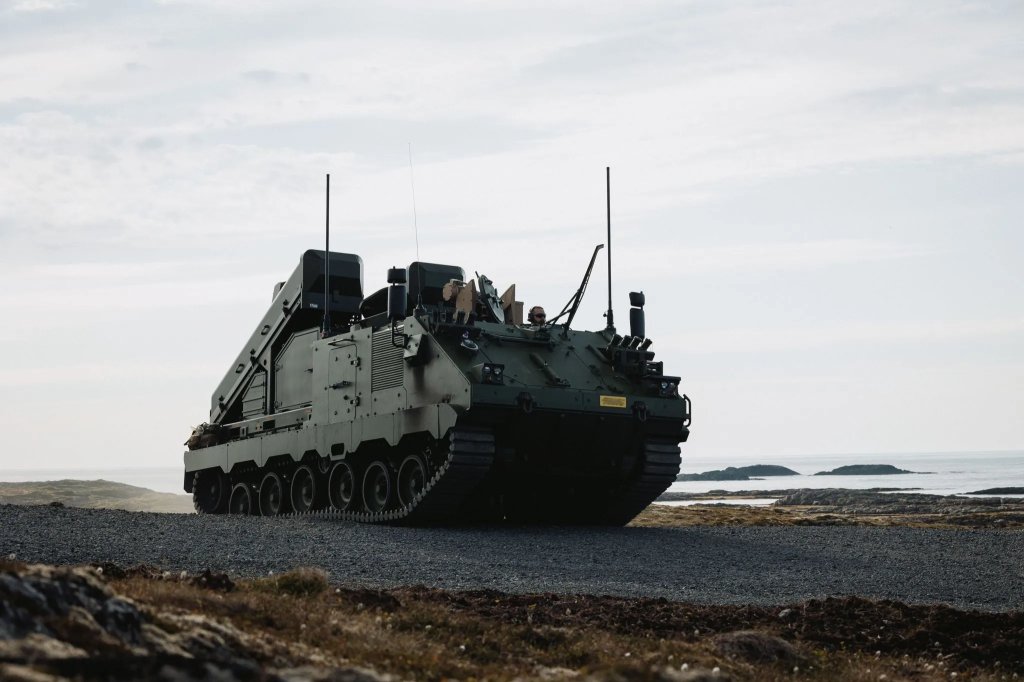Norway’s Kongsberg Defense and Aerospace has launched a new ground-based air defense solution, the NOMADS, or National Maneuver Air Defense System. Designed for the protection of forces on the move, the system appears to draw heavily upon lessons of the war in Ukraine and there have already been reports that NOMADS might end up being supplied to Kyiv.
Whether or not that happens, NOMADS emphasizes the continued resurgence of interest in short-range air defense (SHORAD), after many years of neglect, and will be an important part of the modernization of the Norwegian military, especially in the Arctic region.
NOMADS was publicly unveiled at the Eurosatory defense exhibition taking place outside Paris this week. Designed in conjunction with the Norwegian Armed Forces, the system is designed to be mounted on one of a range of armored mechanized vehicles, with the baseline model being integrated on an ACSV G5 (Armored Combat Support Vehicle) from the German firm Flensburger Fahrzeugbau GmbH (FFG).
FFG is supplying 50 ACSV G5 vehicles to the Norwegian Armed Forces in various configurations.

SHORADS specifically intended to go onto an armored vehicle were commonplace during the Cold War, but then somewhat fell out of favor. As well as a high level of off-road mobility, and the ability to keep up with mechanized forces, this ensures a good degree of protection and, once again, reflects the demands of the kinds of warfare seen currently in Ukraine.
Porting over technologies from the medium-range National Advanced Surface-to-Air Missiles System (NASAMS) — a system used by the United States and Ukraine, as well as Norway, primarily in static applications — the NOMADS module includes active sensors in the form of a 3D active electronically scanned array (AESA) radar and a laser rangefinder. There are also passive sensors, with a day/night camera and a thermal camera.

The radar is reportedly supplied by the Danish Weibel firm and Kongsberg confirms it has a range of at least 31 miles.
All these sensors are brought together — and can be combined with data from off-board systems — via a command and control (C2) architecture taken from NASAMS and supported by NATO-standard identification friend or foe as well as VHF and UHF communications.
The standard weapons for NOMADS comprise four ready-to-fire AIM-9X Block 2 Sidewinders, best known as air-to-air weapons but also an option for the NASAMS. It’s worth noting that four missiles is a relatively low total, while the AIM-9X is also far from a low-cost option with each round costing close to half a million dollars.

Additionally there is a remote weapon station armed with a 50-caliber machine gun and an optional radio-frequency directional jammer. The last two would appear to be included to better deal with close-in threats from small drones, including first-person view (FPV) types, of the kind that are also currently proliferating in Ukraine.
Otherwise, NOMADS is suitable for use against other types of drones, cruise missiles, helicopters, and fixed-wing aircraft. The importance of this kind of capability near the forward edge of the battle cannot be understated, with attack helicopters, especially, having proven in Ukraine to be a particular menace.
“NOMADS can defend against small, short-range targets as drones and cruise missiles, providing unique protection against threats like those currently seen in Ukraine,” said Kjetil Reiten Myhra, Kongsberg’s Executive Vice President Defense Systems. “Its configuration is designed for rapid movement over rough terrain and with unprecedented into-action-time.”
For its primary battlefield missions, supporting maneuver forces, at battalion and brigade level, NOMADS is expected to operate independently, including conducting ‘shoot and scoot’ engagements closer to or at the frontline to improve its own survivability.
However, via the aforementioned C2 architecture, it can also be ‘plugged in’ to wider integrated air defense networks.
According to the Norwegian Ministry of Defense, NOMADS was recently tested at Andøya in the Arctic region, a key operating area for the Norwegian Armed Forces and an increasingly strategic environment overall, considering Russian military expansion there.
“We have carried out successful test firing with the system, where we have tested the entire chain: From the sensors picking up the target until the missile is launched,” explained project manager Geir Sandberg.

These tests involved IRIS-T air-to-air missiles being fired from NOMADS, although this is only an interim solution, with Norway’s having committed to transferring these missiles — formerly used by its now-retired F-16 fighters — to Ukraine.
An initial batch of six NOMADS systems are planned to be delivered to the Norwegian Armed Forces, four of them reportedly already having been handed over. These are scheduled to become fully operational between 2026 and 2028. This is part of a wider expansion of Norway’s air defense capabilities, which include plans to double the number of fielded surface-to-air missiles.
“The Norwegian Armed Forces needs modern air defense in order to be able to combat a high-tech opponent,” Jarle Nergård, a spokesperson for the Norwegian Defense Materiel Agency said.
As for interest in NOMADS from beyond Norway, reports in the German media suggest that the Netherlands is interested in acquiring them. The Dutch requirement is apparently based on 18 vehicles, armed with the AIM-9X missile. Reportedly, the Netherlands is also seeking to arm each of these vehicles with more missiles than the standard four found on the baseline model.

Furthermore, the German government is also said to be considering procuring the system for Ukraine.
While the ACSV G5 vehicle used in the iteration of the system could be procured from the German FFG, there would need to be a wider agreement involving Norway, the United States, and Denmark to ensure that the other critical components of NOMADS could be delivered to Ukraine.
The modular nature of the system could make this process easier, however. For example, the radar and other sensors could be procured from other sources, while the main armament of AIM-9X missiles could be swapped out with IRIS-T missiles. Both AIM-9X and IRIS-T have already been supplied to Ukraine, with the former understood to be incorporated in the ‘FrankenSAM’ applications that adapt Soviet-era air defense systems to fire Western missiles.

As we have discussed in the past, Ukraine has an insatiable demand for ground-based air defenses, with the need for SHORADS — especially those that are able to accompany maneuver forces — being especially prominent.
Reflecting this requirement, the German Rheinmetall company is currently assessing whether Cold War-era Leopard 1 tanks can have their turrets swapped out to be fitted with the Skyranger 35 gun-based short-range air defense system, as you can read about here.
NOMADS would seem to provide an relevant solution for Ukraine, combining a high level of protection and a significant degree of mobility. As well as supporting units on the battlefield, including those that are on the move, it could also provide point defense to critical installations, including plugging into existing air defense networks.
In particular, the threat posed to Ukraine by Russian drones and cruise missile capabilities is significant and something that NOMADS has very much been designed to deal with. At the same time, the development in the West of an armoured, highly mobile, self-contained SHORADS is a notable development in itself.
While Ukraine is already facing cruise missile and drone threats on a daily basis, concerns about these and other aerial threats are now driving something of a renaissance in ground-based air defense around the world, with SHORADS very much at the center of this.
Whether it ends up in Ukrainian hands or not, the appearance of NOMADS appears well-timed to capitalize on this renaissance in short-range air defense capabilities.
Contact the author: thomas@thewarzone.com
